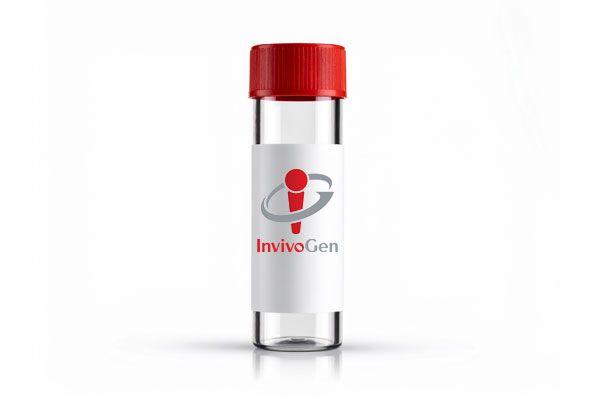
pUNO1-hTLR3-DN
-
Cat.code:
puno1-htlr3-dn
- Documents
Expression-ready ORF Clones
Alias : TLR3, CD283
TLR3-DN (ΔTIR) : Dominant Negative TIR-less TLR3 gene
TLR3 recognizes double-stranded RNA (dsRNA), a molecular pattern associated with viral infection. Stimulation with polyinosine-polycytidylic acid (poly(I:C)), a synthetic analog of dsRNA, was shown to induce hyporesponsiveness in TLR3-deficient mice and marked responsiveness only in 293 cells expressing TLR3 [1], suggesting a specific recognition to poly(I:C) by TLR3.
TLR3 signaling is not elicited by either single-stranded RNA (ssRNA) or dsDNA [2]. TLR3 activation induces cytokine production through a signaling pathway dependent on MyD88. Moreover, poly(I:C) can induce activation of NF-kB and mitogen-activated protein kinases independently of MyD88, and cause dendritic cells to mature [1].
TLR3-DN is a TIR-less form of the TLR3 gene generated by deleting the TIR domain (450 bp). This truncated gene is still able to recognize its ligands but is unable to induce the signaling cascade.
1. Alexopoulou L. et al. (2001). Nature 413(6857):732-8.
2. Matsumoto M. et al. (2002). Biochem Biophys Res Commun. 293(5):1364-9.
3.Takeuchi O.et al. (2001). Int Immunol, 13(7):933-40.
Specifications
Human TLR3-DN (pUNO1-hTLR3-DN)
ORF size : 2265 bp
Subclone : AgeI - NheI
Mouse TLR3-DN (pUNO1-mTLR3-DN)
ORF size : 2268 bp
Subclone : AgeI - NheI
Contents
- 20 µg of lyophilized DNA
- 2 x 1 ml blasticidin at 10 mg/ml
![]() Product is shipped at room temperature.
Product is shipped at room temperature.
![]() Lyophilized DNA should be stored at -20°C. Upon receipt, store blasticidin at 4°C or -20°C.
Lyophilized DNA should be stored at -20°C. Upon receipt, store blasticidin at 4°C or -20°C.
![]() Resuspended DNA should be stored at -20°C and is stable for up to 1 year.
Resuspended DNA should be stored at -20°C and is stable for up to 1 year.
![]() Blasticidin is a harmful compound. Refer to the safety data sheet for handling instructions.
Blasticidin is a harmful compound. Refer to the safety data sheet for handling instructions.
DOCUMENTS
Documents
Technical Data Sheet
Safety Data Sheet
Plasmid Map and Sequence
Plasmid Sequence
Certificate of analysis
Need a CoA ?